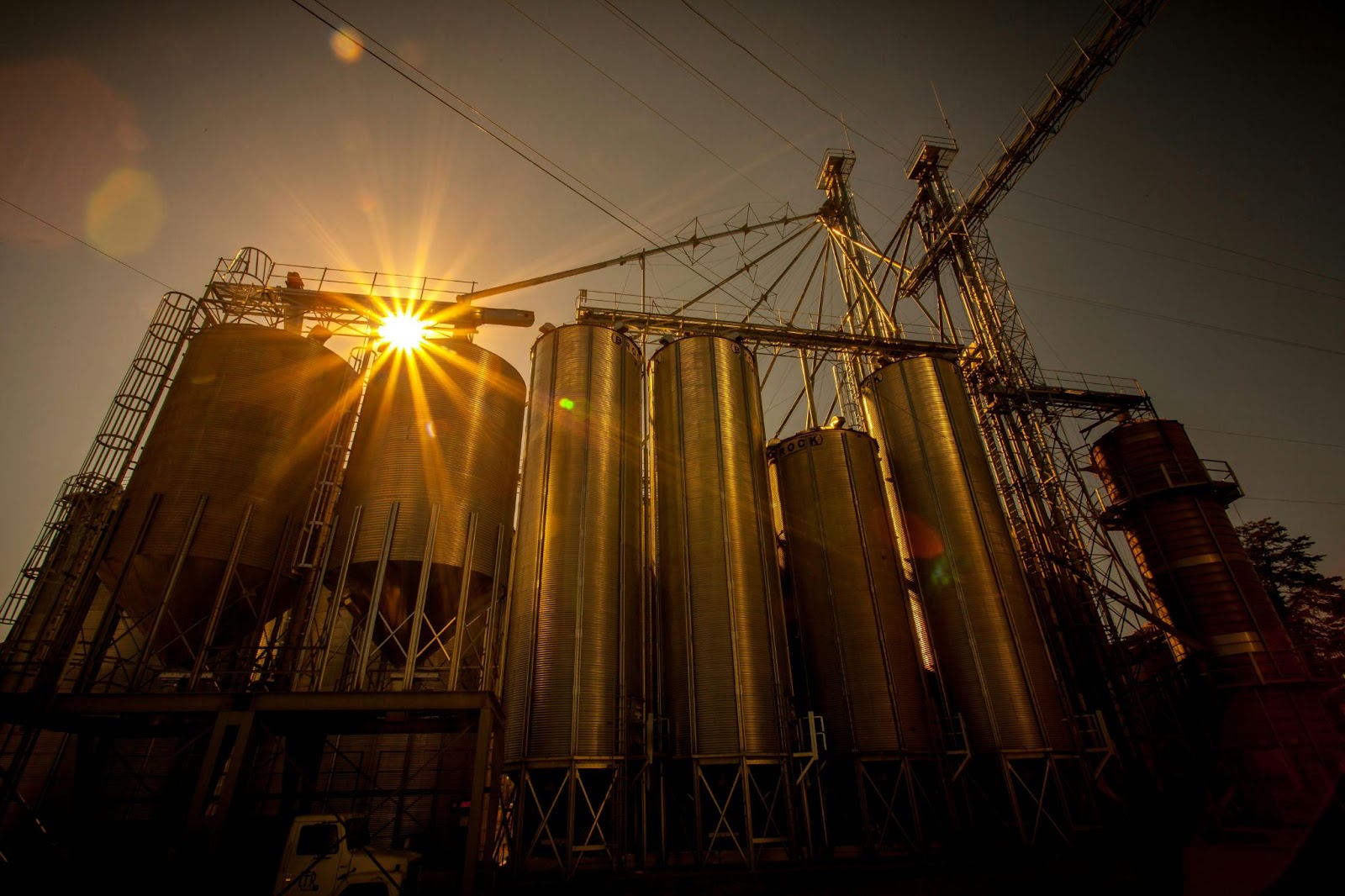สารบัญ
สลับวาล์วสี่ทางเป็นอุปกรณ์ง่ายๆ สำหรับควบคุมการไหลของของไหลในระบบ วาล์วเหล่านี้เป็นแบบสปูล โดยมีข้อดีคือมีพื้นที่ผิวเท่ากันสำหรับปั๊มและถัง นอกจากนี้ยังมีความสมมาตรในแนวตั้ง ทำให้เป็นตัวเลือกที่เหมาะสำหรับการใช้งานที่ต้องควบคุมการไหลของของไหล
วาล์วสี่ทางมีสี่พอร์ตรอบห้อง ปลั๊กไก่ของวาล์วมีสองทางที่เชื่อมต่อกับพอร์ตที่อยู่ติดกัน อาจเป็นทรงกระบอก ทรงเรียว หรือทรงลูกกลม
แต่ละพอร์ตมีตำแหน่งการไหลสองตำแหน่ง และโดยปกติแล้วปลั๊กจะอยู่ตรงกลาง นอกจากนี้ เมื่อวาล์วอยู่ในตำแหน่งปิด พอร์ตทางเข้าและพอร์ตไอเสียจะยังคงเปิดอยู่
หากคุณต้องการทราบข้อมูลเพิ่มเติมเกี่ยวกับวาล์ว 4 ทางและวิธีการทำงาน โปรดอ่านบทความนี้ต่อ
วาล์วสี่ทางคืออะไร?
When you see a 4-way valve, it looks like a simple directional control valve. However, it is often used in double-acting cylinder applications. This type of valve has 4 ports and two flow positions. These valves always supply pressure to one side of the cylinder while allowing the opposite side of the cylinder to be emptied into the atmosphere. As a result, they are very common in double-acting cylinders. The name comes from the four positions the valve can accommodate.
วาล์วเหล่านี้มีประโยชน์สำหรับการจัดตำแหน่งตามลำดับเนื่องจากสามารถเปลี่ยนทิศทางได้โดยไม่สูญเสียสัญญาณ วาล์วสี่ทางเหมาะที่สุดสำหรับการใช้งานที่ความดันเปลี่ยนแปลงตลอดเวลา และยังมีประโยชน์สำหรับการบำบัดสารเคมีในสระและการฟื้นฟูน้ำกระด้าง
วาล์วเหล่านี้ถูกใช้เป็นครั้งแรกในเครื่องยนต์ไอน้ำแบบสองหน้าที่ในยุคแรกๆ วาล์วสี่ทางประกอบด้วยทางเดินรูปตัว "L" สองทางที่ไม่เชื่อมต่อกัน โดยทางละทางของปลั๊ก ทางเดินรูปตัว "L" สองตัวในปลั๊กไม่ได้เชื่อมต่อกัน ทำให้ยากต่อการระบุวาล์วสี่ทางในการตั้งค่าที่ไม่คุ้นเคย
กลไกการทำงานของวาล์วสี่ทาง
ในเครื่องยนต์ไอน้ำแบบดับเบิ้ลแอ็คติ้งรุ่นแรกๆ วาล์วสี่ทางถูกใช้เพื่อควบคุมการไหลของไอน้ำไปยังกระบอกสูบ กลไกการทำงานของวาล์วสี่ทางเกี่ยวข้องกับทางเดิน "รูปตัว L" สองอันที่ไม่เชื่อมต่อกัน นอกจากนี้ วาล์ว 4 ทางยังเป็นที่รู้จักกันในนาม "พอร์ต x"
ในการใช้งานแอคทูเอเตอร์ วาล์วสี่ทางอาจถูกทิ้งไว้ในตำแหน่งบล็อก ในกรณีนี้ วาล์วจะส่งแรงดันไฮดรอลิกจากท่อร่วมไปยังพอร์ตปิดของกระบอกสูบ และแรงดันเดียวกันนี้จะส่งกลับไปยังถังกักเก็บ วาล์วสี่ทางอาจถูกทิ้งไว้ในตำแหน่งบล็อกเมื่ออุปกรณ์ถูกเคลื่อนย้ายหรือกำลังซ่อมแซมตัวเอง
วาล์วสี่ทางมีสี่พอร์ต วาล์วมีฟังก์ชันสากลซึ่งช่วยให้สามารถทำงานเป็นตัวเปลี่ยนทิศทางและตัวควบคุมได้ วาล์วประเภทนี้มีตำแหน่งการไหลสองตำแหน่ง เมื่อวาล์วอยู่ในตำแหน่งตรงกลาง วาล์วจะปิด มีทั้งหมดสี่หรือห้าท่อเชื่อมต่อกับวาล์วนี้ คุณสามารถปิดวาล์วจนสุด เปิดวาล์วจนสุด หรือเปิดวาล์วบางส่วนก็ได้
เมื่อคุณเลื่อนไปยังตำแหน่งตรงข้ามกับตำแหน่งตรงกลาง วาล์วจะเปิดเต็มที่ อย่างไรก็ตาม เมื่อคุณเลื่อนที่จับไปครึ่งหนึ่ง มือจับจะเปิดบางส่วน ด้วยวาล์วเหล่านี้ คุณสามารถย้อนกลับการเคลื่อนที่ของกระบอกสูบหรือมอเตอร์ได้อย่างง่ายดาย
Advantages of a 4-Way Valve
ความเก่งกาจ
Four-way valves are versatile components that provide multiple flow path options, allowing engineers to control the direction of fluid flow in hydraulic or pneumatic systems.
The versatility of 4-way valves is particularly beneficial in applications where the direction of fluid flow needs to be changed regularly.
These valves feature four ports, enabling the redirection of fluid to different paths within the system.
This flexibility is invaluable for dynamic systems requiring adaptable flow control.
Efficient Control
These valves offer precise control over hydraulic or pneumatic systems, facilitating the accurate management of fluid flow and system components.
The ability to direct fluid to different outlets or paths enables efficient control of actuators, cylinders, or other components within the system.
This precision is crucial for applications that require accurate and controlled movements, such as robotics, manufacturing equipment, or other automated systems.
Simplifies System Design
Integrating multiple functions into a single 4-way valve simplifies system design, potentially leading to cost savings and a more compact layout.
Instead of using multiple valves for different functions, a single 4-way valve can handle various tasks.
This streamlined design not only reduces the number of components in the system but also simplifies the overall architecture.
The consolidation of functions enhances system efficiency and can contribute to a more straightforward installation and maintenance process.
Disadvantages of a 4-Way Valve
Complexity
The added functionality of 4-way valves may result in increased complexity, demanding careful consideration during system design.
Engineers need to understand the internal design, electrical or pneumatic controls, and potential interdependencies of 4-way valves.
The complexity may involve aspects such as the valve’s switching mechanism, feedback systems, and compatibility with other system components.
Proper engineering and documentation are crucial to manage and troubleshoot the complexity effectively.
ค่าใช้จ่าย
Four-way valves can be more expensive than simpler alternatives, and the overall cost may vary based on various factors.
The initial investment in 4-way valves may be higher due to their advanced features and capabilities.
Factors influencing the cost include the valve size, materials used in construction, and the level of automation or control features.
While the upfront cost may be a consideration, it’s essential to weigh the long-term benefits in terms of system efficiency, reduced components, and potential operational cost savings.
Maintenance Challenges
The increased complexity of 4-way valves may lead to more intricate maintenance procedures, requiring careful planning.
Maintenance involves understanding the valve’s internal components, seals, and potential failure modes.
Regular inspections and preventative maintenance are essential to ensure continued reliable performance.
Any downtime for maintenance should be carefully planned to minimize disruptions to the overall system.
Proper training for maintenance personnel is crucial to address the intricacies of 4-way valve maintenance effectively.
What is the Difference Between a 3-Way Valve and a 4-Way Valve?
A 3-way valve has three ports: one inlet and two outlets (or vice versa). It is commonly used for diverting or mixing flows in various applications.
On the other hand, a 4-way valve has four ports and is often employed in more complex systems where the flow needs to be diverted or switched between different paths.
The additional port in a 4-way valve offers more versatile control options, making it suitable for diverse hydraulic or pneumatic systems.
คีย์ Takeaway
While 4-way valves offer significant advantages in terms of versatility, control, and simplified system design, careful consideration of their complexity, cost, and maintenance requirements is essential for successful integration into hydraulic or pneumatic systems.
Engineers must balance these factors to optimize the performance and efficiency of their systems over the long term.










